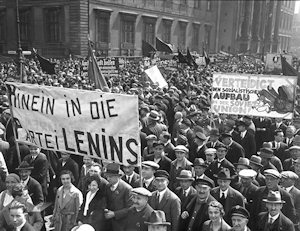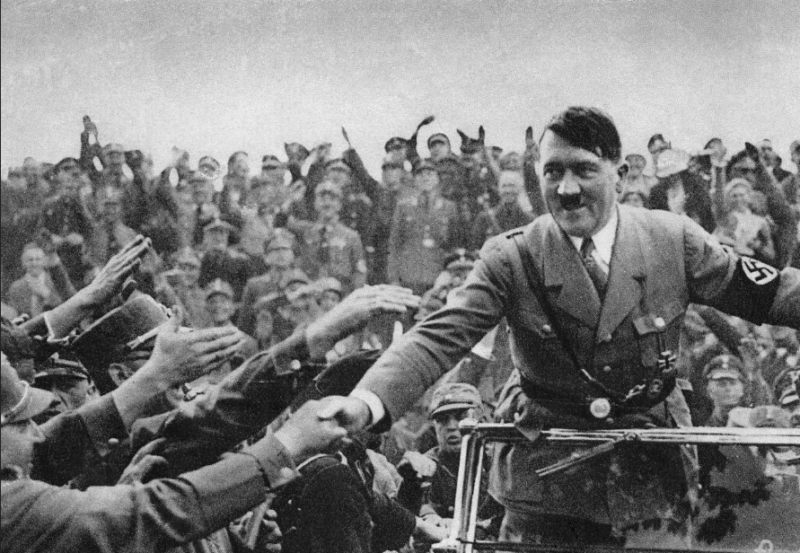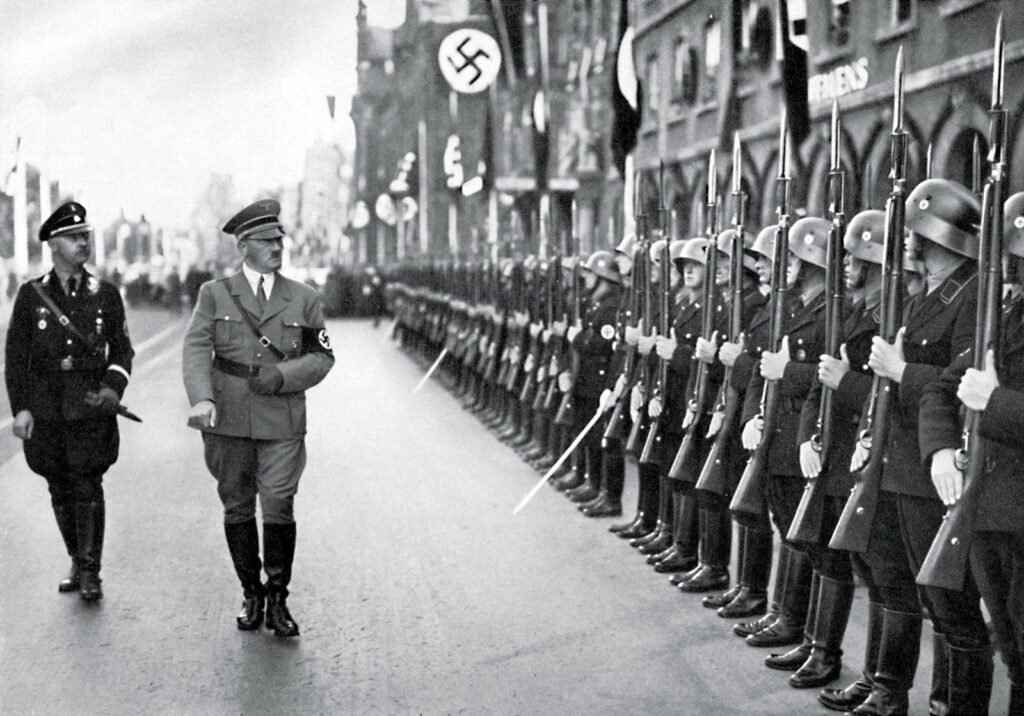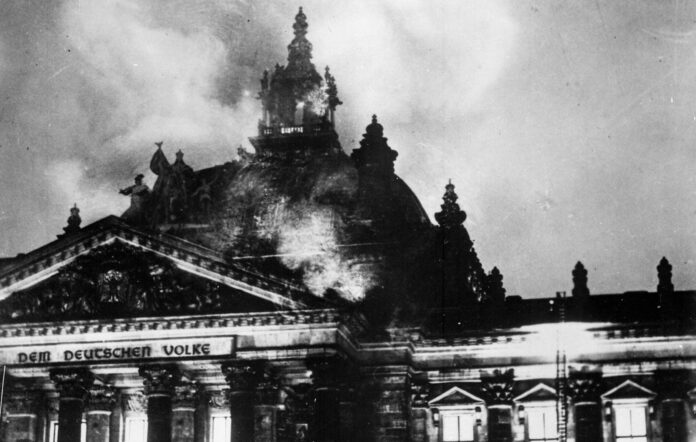The Reichstag Fire on the night of February 27, 1933 was one of those pivotal moments in the German and World History, which set an unstoppable path for the country and the world, bringing innumerable tragedies, and from which people could not choose to come back. It was an event that Adolf Hitler, the then Chancellor of Germany, used for the expansion of his control and to gain total authority over the nation.
Labor Militancy and Hitler’s Rise
The National Socialist Workers’ Party, or Hitler’s Nazi Party, emerged and rose from the national crisis. It only had a vote share of two percent in 1928. They primarily began to rise after the Great Depression, which struck the Western world in 1928, with particular intensity in Germany. The Nazis, though, were not the only ones to have rose from the Depression. Six million, around thirty percent of the population, had registered themselves unemployed during the economic crisis.
Labor militancy and people’s disbelief in Capitalism increased. This also resulted in gains for the Communist Party, which received ten percent votes in 1930. Nazism’s well-oiled machinery which depended on the selling of ‘Aryan’ dreams and scapegoating of Jews also seemed to have made sense to the disillusioned public, which resulted in Nazis receiving eighteen percent of the votes.

No party, however, was ever able to gain enough support to have received a majority of vote shares. The reason why Nazis reached in government was that the Conservatives such as President Hindenburg, Vice-Chancellor Von Papen, and German National People’s Party enabled and saw in Nazis the possible way to address the mass discontent and to stop the radicalization against Capitalism that was prevalent in Germany those days.
By 1933, the Nazi Party had become the largest in terms of electoral votes, winning close to a third of the total votes. President Hindenburg had also been insisted by representatives of industry, capital, and finance to choose Hitler as the Chancellor, and so he did on January 30, 1933.

The Conspiracy Against Democracy
After coming to power, Nazis who were funded by the monopoly capitalists were desperate and went to great lengths to suppress the labor unrest and the protests against fascism. Only later did people know that this desperation will later lead to the abolition of democracy itself.
The new cabinet obtained from the President a decree dissolving the Reichstag, and calling new elections for March 5, 1933, since no single party received a majority. Goering, the Minister of Interior and a member of the Nazi Party, also obtained a decree that had been prepared by Von Papen but never issued, giving the new ministry emergency powers to combat “acts of terrorism” by the Communists. On February 22, around fifty thousand Nazi Stormtroopers were enrolled as auxiliary police in Prussia, and on February 24 headquarters of the Communist Party were raided by the Interior Ministry, with the State (falsely) announcing that it has found seditious material there, with a plan to burn public buildings.
9 pm of the 27th of February, 1933 was the time when the pedestrians first heard the sound of the breaking of glass from Reichstag, and this was soon followed by the breakout of fires in a whole section of the German Parliament. The fire brigade soon arrived but took hours to quell the fire, which destroyed the debating chamber and the Reichstag’s gilded cupola, ultimately causing over $1 million in damage. From the scene, police arrested an unemployed Dutch construction worker named Marinus van der Lubbe. Soon, mass arrests followed and a total of four thousand activists were arrested. Goering announced that the Reichstag Fire was to have been the signal for an insurrection and terrorist acts throughout Germany. Hitler is reported to have said Von Papen, “If this fire, as I believe, is the work of the Communists, then we must crush out this murderous pest with an iron fist.”
This resulted in the “Decree of the Reich President for the Protection of the People and State” within a few hours. The decree abolished freedom of speech, assembly, privacy, and the press; legalized phone tapping and interception of correspondence; and suspended the autonomy of federated states. The Communist Party received 17 percent votes in the March elections, but most of the 81 elected Communists in the Reichstag had been indefinitely jailed, giving Nazis total control of the Parliament. On March 23, the Nazis passed Enabling Act, which gave the power of legislations solely to the Cabinet of Hitler. After a year in August 1934, President Hindenburg died, and Hitler saw the chance to combine the offices of Chancellor and President, making him the Dictator of Germany.

Did Nazis Burn the Reichstag to Gain Dictatorship?
Even though Communists were accused by Nazis of being responsible for the fires, they have since then been declared innocent by nearly all of the investigations. Historians Peter Black and Benjamin Hett, along with many others, strongly suspect the Nazis as being behind the fires and find impossible the assertion that Van Lubbe could have acted alone. Hett asserts that the Nazis in power who investigated the fire and later discussed its causes with historians covered up Nazi involvement to evade war crimes prosecution. Goering had even stated once at a dinner table beside Hitler that it was a plan of Nazis, according to a witness. The Communists who had been accused, including Ernst Torgler, the Chairman of the Communist Party, had been declared innocent by the Courts due to lack of any evidence. Van Lubbe confessed to his crime and was declared guilty.
The burning of the Reichstag, the German Parliamentary Building, has been remembered the world over as an incident that glaringly exposed the fragility of democracy. It showed us how under the weight of conspiracies and lies, terroristic forces can capture the minds of the people and use the moment such that the people be willing to give up their rights. This conspiracy, which was used by a person to become a dictator, surely has relevance for our times in India when people have again become desperate to trade in conspiracies, lies, and blood.
Ananya Kumar is studying History at the University of Hyderabad




[…] ಸಾಮಾನ್ಯವಾಗಿ ‘ಕೋಡಿ ಕಥಿ’ ಮೂರು ಇಂಚು ಉದ್ದವಿರುತ್ತದೆ. ಕೆಲವೊಮ್ಮೆ ಅದನ್ನು ಇನ್ನೊಂದು ಮೂರು ಇಂಚುಗಳಷ್ಟು ವಿಸ್ತರಿಸುವ ಅವಕಾಶವನ್ನು ಹೊಂದಿರುತ್ತದೆ. ಸುಮಾರು ವರ್ಷಗಳ ನಂತರ ರಾಜ್ಯದಲ್ಲಿ ನಡೆದ ಇಂತಹ ಸಾವು ಇದಾಗಿದೆ. […]